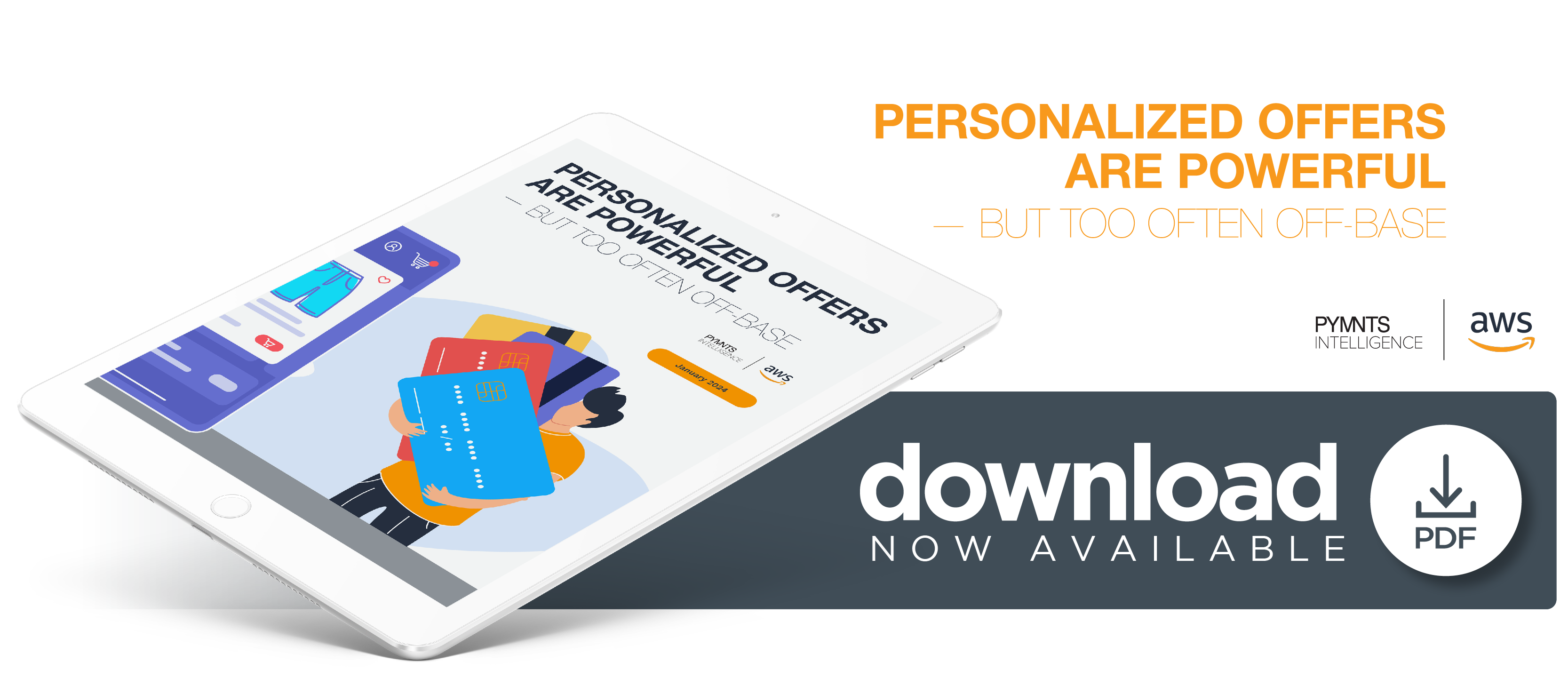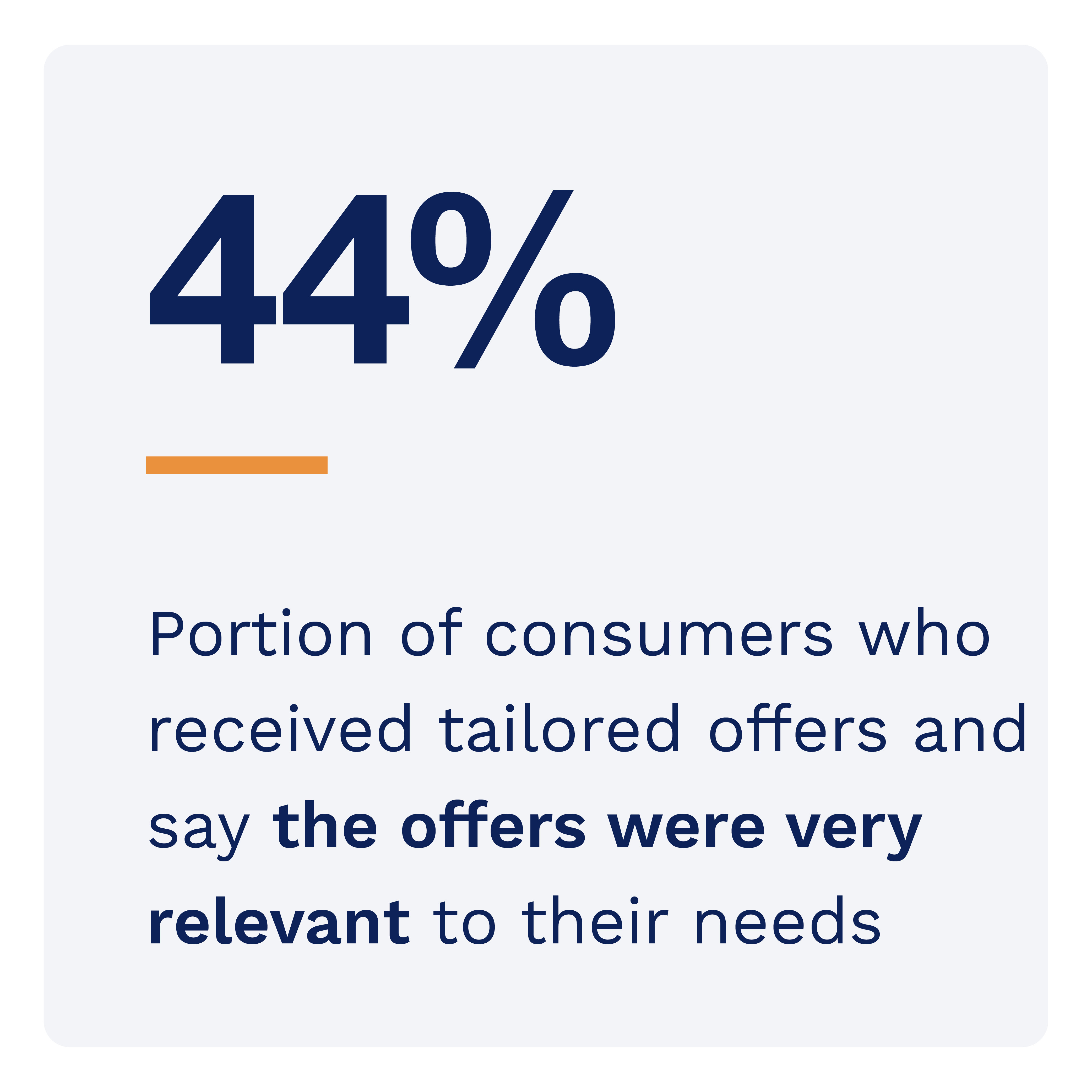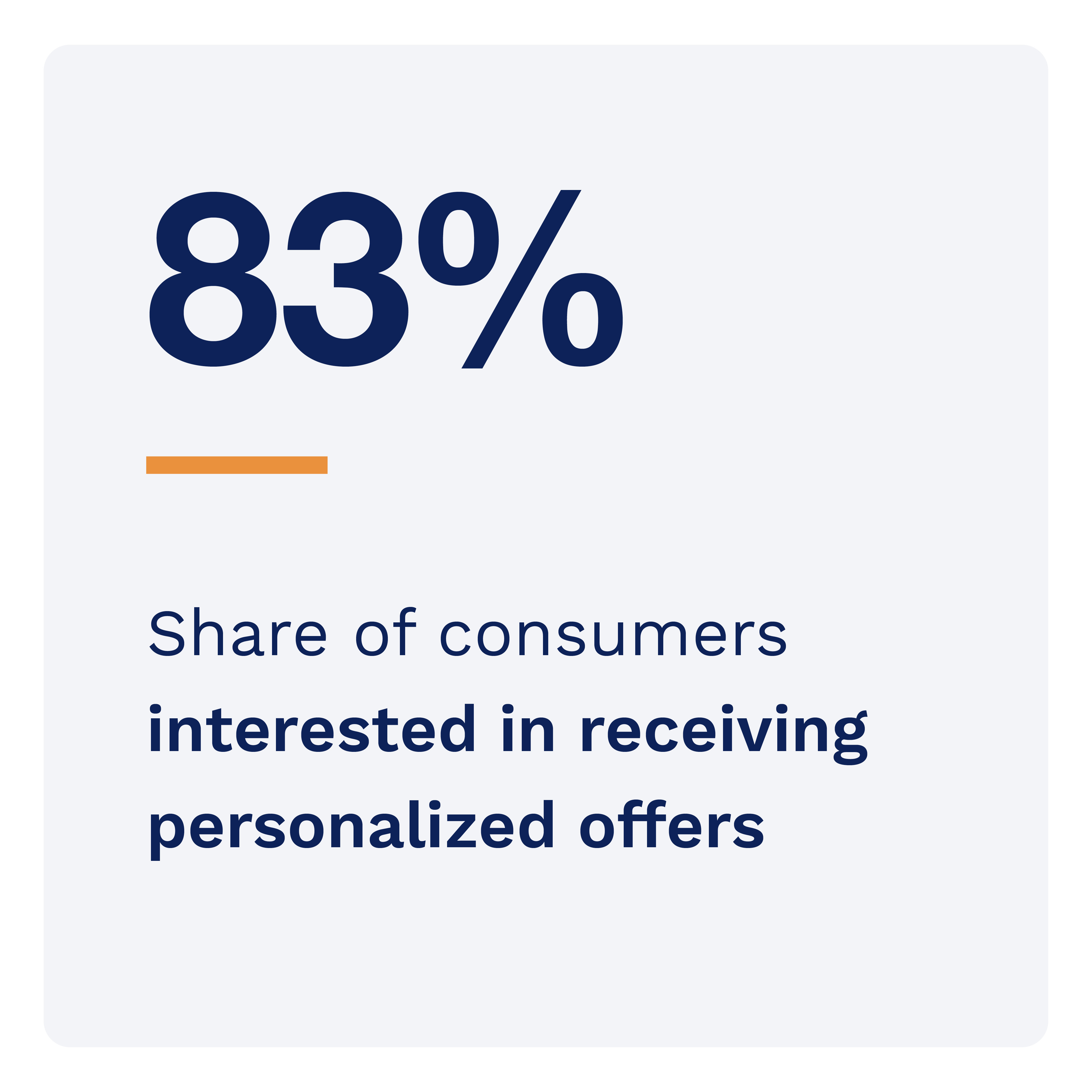More Than Half of Consumers Say Personalized Offers Miss the Mark

Personalized offers can be a game changer for merchants. Still, attempts that miss the mark have the potential to annoy and alienate potential customers. Despite these offers’ potential to provide a competitive edge and foster customer loyalty, the art of effectively crafting and distributing them has remained elusive for merchants. PYMNTS Intelligence’s latest data confirms that personalized offers can be powerful drivers of purchasing behaviors — but often fail.
Nearly half of consumers will likely switch to merchants that provide more relevant offers. Millennials, in particular, follow this trend and are 41% more likely to switch merchants in this situation. Personalization is not merely preferred but expected. This evolution in consumer behavior means some merchants must update their capabilities to better meet individual customers’ needs.
But it is not enough to be loosely personalized. Merchants must have data-driven strategies to accurately understand and address their targeted consumers. Doing so can enhance consumer engagement and foster loyalty in a competitive market.
These are some of the key findings in “Personalized Offers Are Powerful — But Too Often Off-Base,” a PYMNTS Intelligence and AWS collaboration. For this edition, we surveyed 2,549 United States consumers from Oct. 11 to Oct. 26 to understand the effectiveness and consumer perception of personalized offers, the challenges in executing them correctly and the impacts on merchant-customer dynamics.
Other key findings from the report include:
Tailoring offers to a consumer’s needs and interests double their chances of switching merchants.
One plus of personalized offers is the ability to incentivize consumers to break routines and shop with new merchants specifically for the offer. Millennials have spearheaded this trend, as 41% report being likely to switch for better personalization. Generations Z and X aren’t far behind, at 34% and 26%, respectively. Baby boomers and seniors are the least incentivized to switch merchants based on offer personalization. Even so, roughly 1 in 8 would likely switch.
Facial recognition and personalized offers garner significant consumer interest.
Eighty-three percent of consumers are receptive to personalized offers. The significant interest in receiving these offers spotlights their growing importance to merchants. More than 7 in 10 consumers have received a personalized offer in the last 30 days, meaning they are becoming ubiquitous in the market. Just 17% of consumer respondents had no interest in receiving personalized offers. On the other hand, one-third of all consumers consider personalized offers crucial to their shopping experiences.
Many merchants need better personalization of the offers they send.
Just 44% of consumers who received tailored offers say they were very relevant to their needs. We found that 24% of consumers rank the personalization of an offer as the most crucial factor in receiving one. This sentiment jumps to 36% among those who say merchants are not properly tailoring offers to their needs. This dynamic shows that consumers currently receiving poorly tailored offers tend to place greater weight on personalization.
Improving the accuracy of the data that informs merchants how to successfully send personalized offers to targeted consumers could be key to effectively tapping prospective customer bases across demographics. Download the report to learn what U.S. consumers find valuable in personalized offers and what merchants must do to succeed.